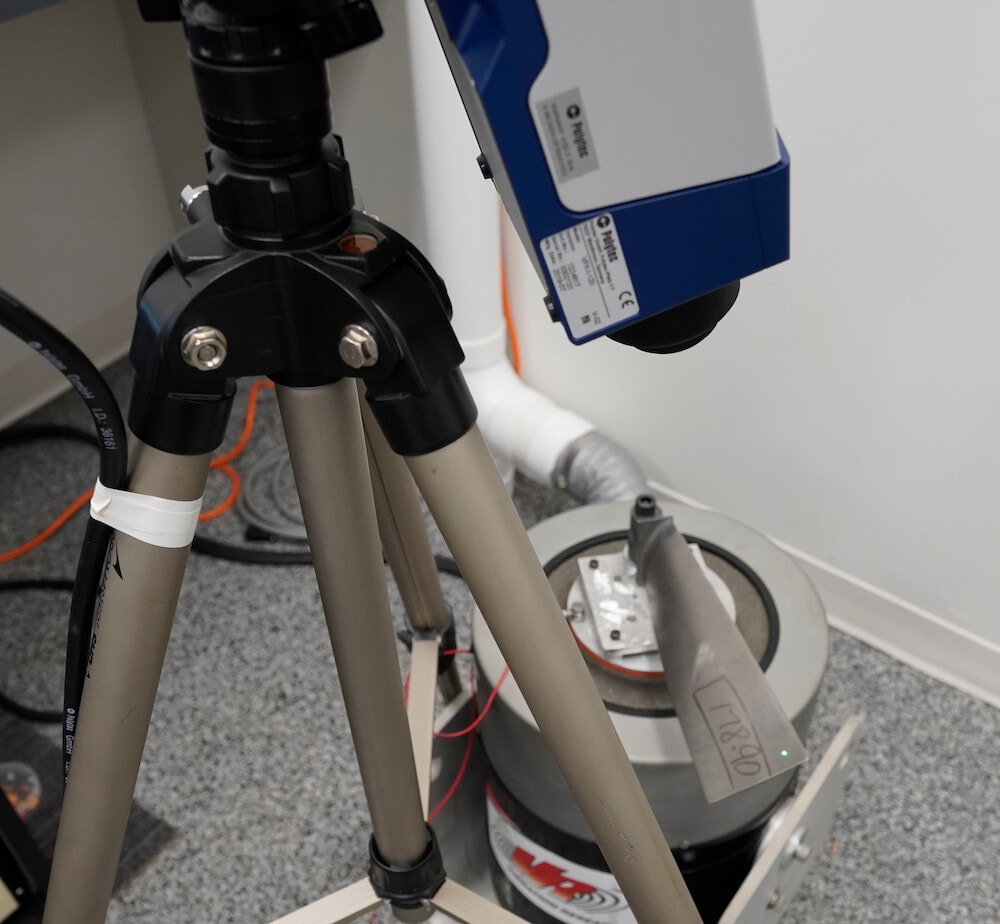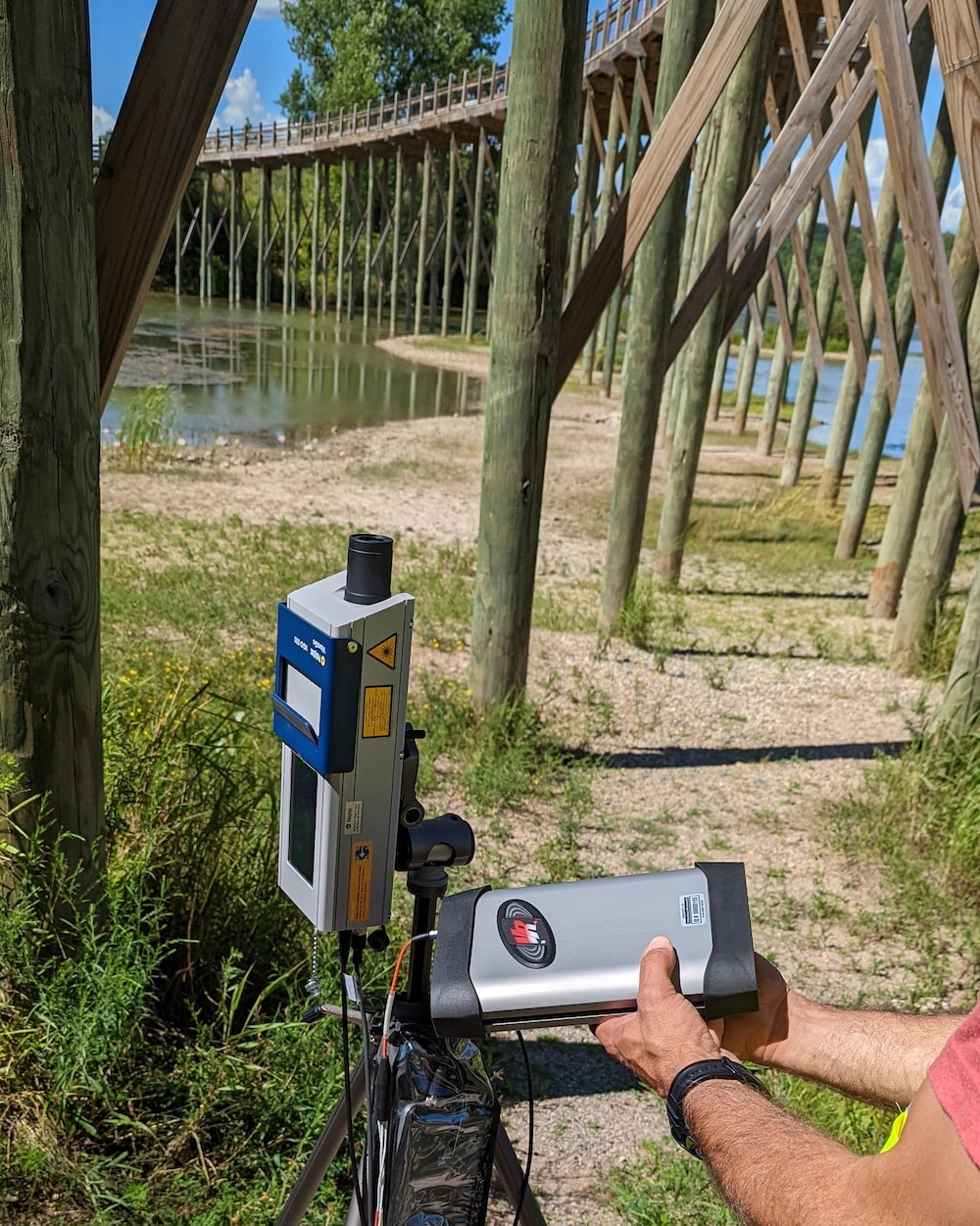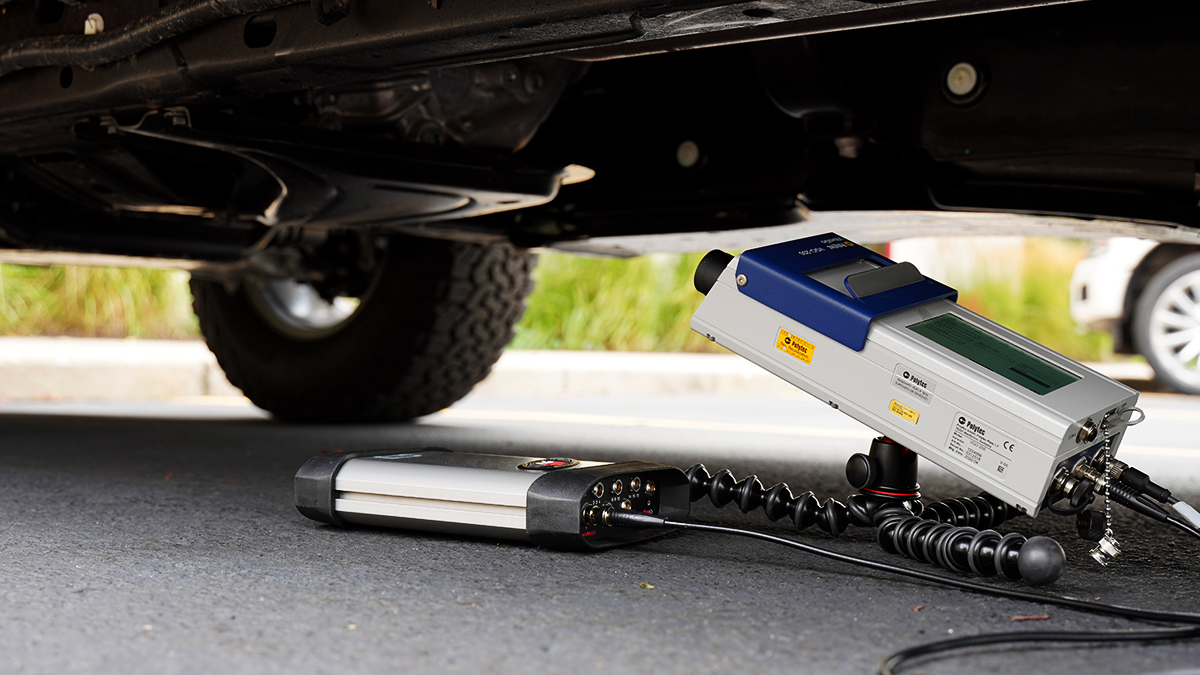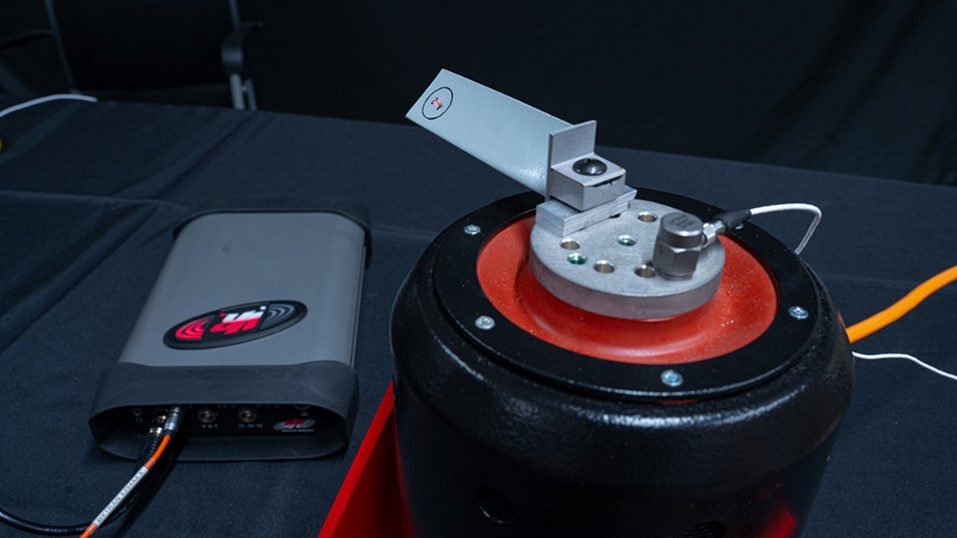In vibration testing, technicians use a vibration sensor to convert the physical event into an electrical signal. Most popular is the accelerometer, which technicians mount to the device under test (DUT) to measure its acceleration.
However, mounting a sensor directly to the DUT can be detrimental in some testing situations. In such instances, the laser vibrometer may be a viable substitute.
What is a Laser Vibrometer?
 A laser vibrometer is a vibration measurement tool that uses the laser Doppler effect to detect changes in movement. The Doppler effect describes the change in waveform frequency as the source of vibration moves closer to or further away from the observer. A change in the optical distance between the sensor and the vibrating component causes a doppler shift that is directly related to velocity and displacement.
A laser vibrometer is a vibration measurement tool that uses the laser Doppler effect to detect changes in movement. The Doppler effect describes the change in waveform frequency as the source of vibration moves closer to or further away from the observer. A change in the optical distance between the sensor and the vibrating component causes a doppler shift that is directly related to velocity and displacement.
Unit Conversion
Velocity and displacement are the true measurements of a vibrometer, meaning the equipment does not perform any analysis/calculations to derive the data. As velocity and displacement are the equipment’s true measurements, the acceleration settings derive data from these settings.
We suggest using the velocity or displacement setting to avoid lagging or errors while converting the data to acceleration. Velocity is the go-to setting for mid to high frequencies; low-frequency measurements (<150Hz) increase the chances of integration error and may call for displacement. Most importantly, the technician should consider the application and the DUT’s excitation frequency.
After a test, the velocity measurements can be converted to acceleration or displacement. Acceleration, velocity, and displacement are standard measurements of waveform movement. Each provides information about the location of the DUT as a function of time. These measurements are directly related, so engineers can collect one and convert it to another.
Learn more about ObserVIEW’s unit conversion capabilities in the blog, “Convert Time Data to Velocity and Displacement.”
When to Use a Vibrometer
Mass Loading
Mass loading is one of the challenges in vibration testing. A DUT’s resonant frequency will change if the technician adds mass, such as a sensor. This frequency change is evident with a vibrating cantilevered beam, particularly with a curved cantilevered beam, such as a turbine blade. Even the smallest accelerometers affect the resonant frequency of the turbine blade.
A solution to mass loading is to measure the turbine blade’s accelerations with a non-contact sensor, such as a laser vibrometer.
Learn more about mass loading in the VR paper, “Mass Loading and Benefits of a Laser Vibrometer.”
Component Sturdiness
A sensor’s mass can also be an issue if a DUT has a delicate structure. For example, a piano is composed of many components that cannot bear the weight of a sensor, and a vibrometer is a viable replacement.
Small or Unreachable DUT
 If a DUT is large or complex, it may be laborious to reach the area to mount a sensor, particularly if the engineers are taking measurements in the field environment. For example, maintenance on a constructed bridge may not necessitate the equipment to reach underneath the structure. A laser vibrometer could measure the bridge’s vibration without specialized equipment.
If a DUT is large or complex, it may be laborious to reach the area to mount a sensor, particularly if the engineers are taking measurements in the field environment. For example, maintenance on a constructed bridge may not necessitate the equipment to reach underneath the structure. A laser vibrometer could measure the bridge’s vibration without specialized equipment.
Alternatively, if a DUT is smaller than the sensor, a non-contact vibrometer may be the solution. Technicians cannot measure components like electronic chips with many types of physical sensors.
Temperature
A sensor must be able to operate under a test’s range of environmental conditions, including extreme levels. All physical sensors have a temperature range under which they can work accurately. Components like catalytic converters produce high temperatures while in use, and a non-contact sensor may be a better measurement option.

What Surface Types are Acceptable?
A vibrometer looks for light returning to the sensor. A reflective surface or a shorter span of distance increases the amount of light the equipment receives. In general, surface preparation is not necessary. The signal return should be ample in most test setups.

